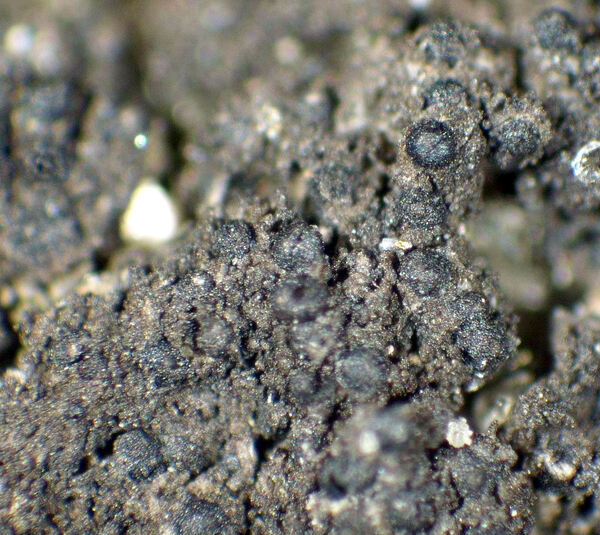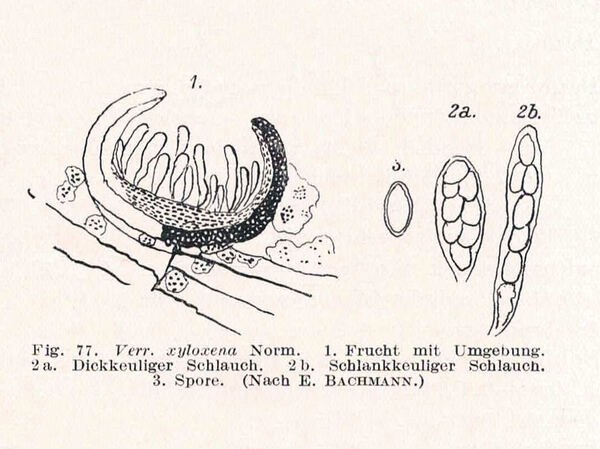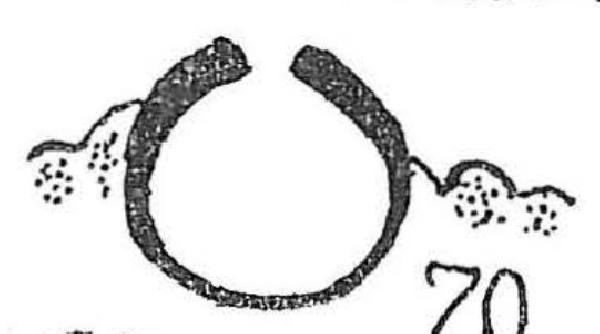Verrucaria xyloxena Norman
Bot. Not.: 87, 1867.
Synonyms: Involucrothele velutinoides (Hellb.) Servít; Thelidium velutinoides (Hellb.) Servít; Verrucaria acrotella f. terrestris Arnold; Verrucaria floerkei Trevis.; Verrucaria melaenella Vain. non auct.; Verrucaria terrestris (Arnold) Vain. non (Th. Fr.) Tuck.; Verrucaria velutinoides Hellb.
Distribution: N - TAA (Nascimbene & al. 2022).
Description: Thallus crustose, episubstratic, brown to blackish brown, thin, verrucose, sometimes surrounded by a brown prothallus, composed of 15-35 µm wide goniocysts, the cells isodiametrical to oblong, thick-walled. Perithecia frequent, brownish black to black, globose to broadly ovoid, 0.15-0.25 mm across, immersed, the upper part projecting, not flattened at the top. Involucrellum absent; exciple dark-carbonaceous throughout; paraphyses absent, hamathecium of branched, 25-35 µm long periphyses and periphysoids, interascal filaments absent; hymenial gel hemiamyloid, I+ red (I+ blue at very low concentrations of I), K/I+ blue. Asci 8-spored, clavate, I-, fissitunicate, the wall thickened above, with a small ocular chamber, dehiscent by extrusion of an endotunica to form a delicate rostrum, Verrucaria-type. Ascospores 1-celled (overmature spores sometimes 1-septate), hyaline, ellipsoid, (13.5-)15-21(-27) x (5.5-)6-9(-11) µm, without gelatinous appendages, 2-4 times as long as wide. Photobiont chlorococcoid. Spot tests: thallus K-, C-, KC-, P-, UV-. Chemistry: without lichen substances.Note: on calciferous soil, often associated with acrocarpous mosses, mostly in upland areas but usually below the Alpine belt; easily overlooked, and perhaps more widespread in the Alps.
Growth form: Crustose
Substrata: soil, terricolous mosses, and plant debris
Photobiont: green algae other than Trentepohlia
Reproductive strategy: mainly sexual
Commonnes-rarity: (info)
Alpine belt: absent
Subalpine belt: rare
Oromediterranean belt: absent
Montane belt: very rare
Submediterranean belt: absent
Padanian area: absent
Humid submediterranean belt: absent
Humid mediterranean belt: absent
Dry mediterranean belt: absent
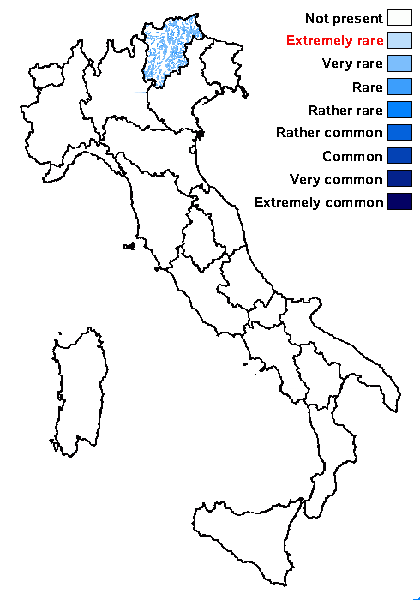
Predictive model
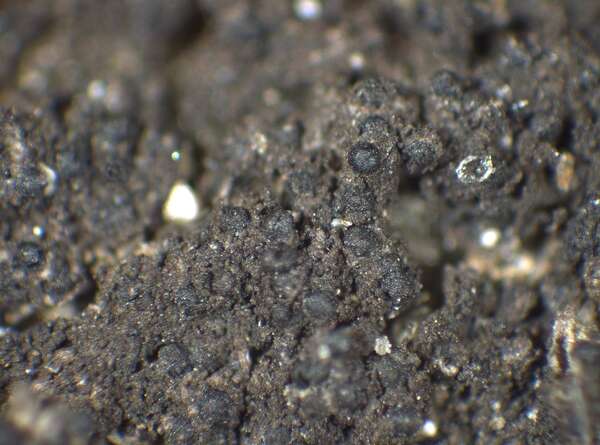

P.L. Nimis; Owner: Department of Life Sciences, University of Trieste
Herbarium: GZU (10-94)
2003/04/28
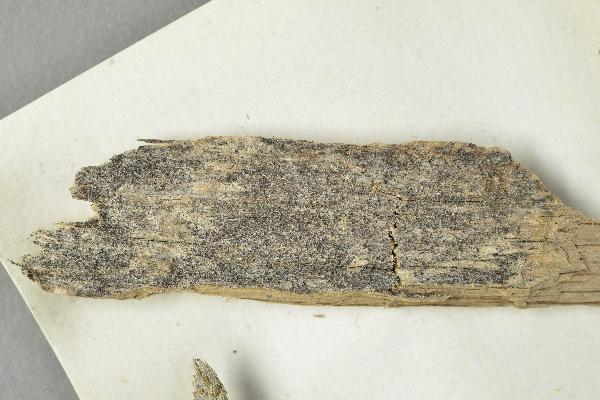
Source: https://nhm2.uio.no/typephotos/lichens/arkiv/O-L-001056d.jpg
NORWAY, TROMS, TROMSØ: ad insulam Tromsö, ., Norman, J.M. - ISOTYPE
Growth form: Crustose
Substrata: soil, terricolous mosses, and plant debris
Photobiont: green algae other than Trentepohlia
Reproductive strategy: mainly sexual
Commonnes-rarity: (info)
Alpine belt: absent
Subalpine belt: rare
Oromediterranean belt: absent
Montane belt: very rare
Submediterranean belt: absent
Padanian area: absent
Humid submediterranean belt: absent
Humid mediterranean belt: absent
Dry mediterranean belt: absent

Predictive model


P.L. Nimis; Owner: Department of Life Sciences, University of Trieste
Herbarium: GZU (10-94)
2003/04/28

 INDEX FUNGORUM
INDEX FUNGORUM
 GBIF
GBIF
 DOLICHENS
DOLICHENS
